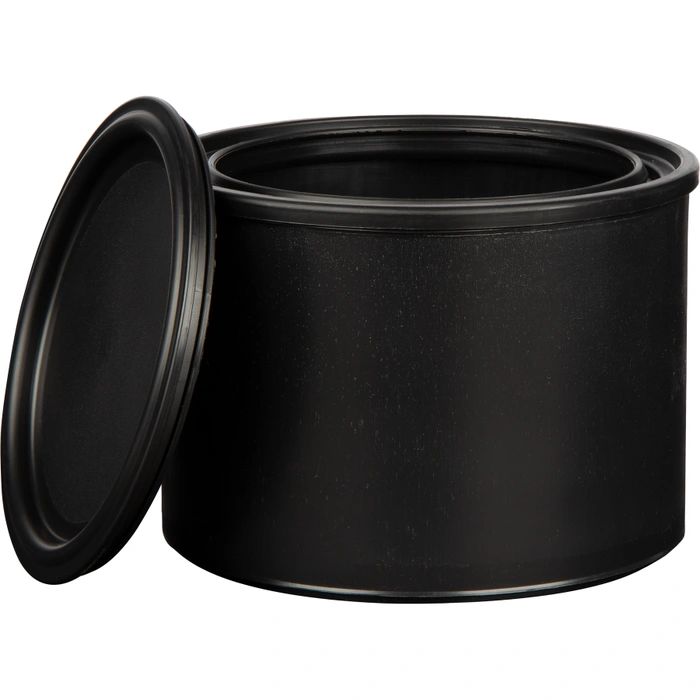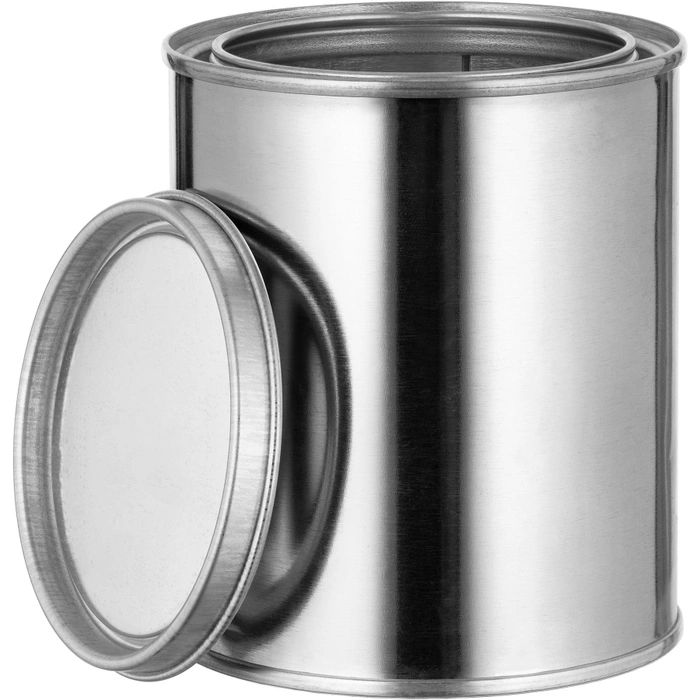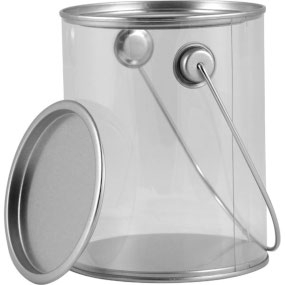
Paint Can Sizes | All Standard & Non Standard Sizes


Find the Right Amount of Paint!
Whether you are working on a new building or touching up on existing ones, it is important to know how much paint is needed for the project. With sizes ranging from a pint and a quart to a gallon and a liter, the different names can be confusing to know which one is the right size for you. There are simple steps that can be taken to get the right amount of paint for your project.
What Materials Hold Paint?
Before we talk about the different sizes, it is important to understand the materials that are available that are used to hold paint in paint cans. Different materials hold different types of paint. These materials include:
1. Plastic
Some paint cans are made of regrind Polypropylene (PP) material. They are a great choice for storing water-based and latex coatings as well as adhesives, mastics and other viscous products. It is a popular choice due to its 100% recyclable build and dent-resistant plastic body.


2. Metal
There are metal paint can options available made of tin. They are a popular choice for coatings or oil-based products. Metal paints cans are also 100% recyclable, with a material made of 25% post-consumer recycled (PCR) content. They are double seamed on the top and bottom to avoid leakage.


3. Hybrid
Hybrid paint cans are made of two different materials: polypropylene and tin. This style of can has a plastic bodywith an epoxy lined metal ring and metal lid. They are commonly used to store paints, colorants, and most water-based products. Hybrid cans can be used as a great alternative to metal paint cans.


Paint Can Linings
Inside some paint cans, primarily metal and hybrid, are linings that are designed to keep rust from forming inside the can. Rust in paint can change its color to a darker shade and potentially lead to contamination. Each lining is used for different types of paint, whether your paint is oil based, water based or a different coating.
Some popular examples are:
Epoxy Phenolic
Known for having a gray color, an epoxy phenolic lining is commonly used with water-based paints and latex products. They are a popular choice with metal and hybrid paint cans.
Epoxy phenolic linings are also known for their excellent chemical resistance.


Gold Phenolic
Paint cans that have a gold phenolic lining are used for solvent coatings and oil-based products. It is also the only lining to be FDA Compliant for food products.
This style of lining is also used mostly with metal paint cans.


Unlined
Some paint cans are available without a liner. Instead, these cans are sprayed or rinsed with a rust inhibitor that helps slow rusting prior to product filling.
Unlined paint cans are a great choice for oil-based or solvent coatings.


What are the Different Paint Can Sizes?
After finding the right paint can material and lining, another important thing to note is that different jobs are going to require different amounts of paint. To keep things simple, most paint can sizes are equivalent to a certain amount of fluid ounces. The graphic below goes over different sizes and how many fluid ounces each can hold.
Some of the most popular paint can sizes are:


How To Calculate Area for Paint
Before purchasing any paint, it is important to know how much space you are working with to help determine the amount of paint you need for your project.
If you are working on a wall, the first step would be to measure the length and width of the wall you are working on. If the project requires working with multiple walls or an entire room (with ceiling and floors included), the same process can be used. However, it is important to add the area of all the space you are working with at the end.
For example, if you have a 10 x 10 foot wall, the surface area would be 100 feet. If you have four walls, a ceiling and a floor to work with at the same area, it would be 600 feet.
It is also important to note that if there are doors and windows that are attached to or near the wall that you do not want painted, their area should be subtracted from the other places that are being painted.
Calculating How Much Paint Is Needed
Now that you have determined your area, the amount of paint you need is simple to calculate.
Using the gallon as the benchmark, how much paint you need is an easy process. The following graphic is a project example with four walls (two long and two short) and an eight foot ceiling.


How Much Paint Do You Need?
The Cary Company offers a wide variety of paint can sizes for your painting needs, from ¼ pint to 5 quarts. Whether you are working with an oil-based paint or a water-based coating, we are here to assist you to answer every question to find the right can.
If you have any questions, give us a call at 630-629-6600 or email us at sales@thecarycompany.com!
We also have resources available on how to open a paint can, how to close a paint can, how to dispose paint cans after using them and much more.




